Hello and welcome to Episode 24 of Read Paradise Lost with me, Jane Davis, a podcast and Substack newsletter about my project to read all of Paradise Lost by John Milton, aloud, and with a sometimes word-by-word, sometimes line-by-line discussion. This is a one-take recording with no editing, so forgive noise of seagulls, my coughing, or sound of men drilling next door. Rough and ready reading is what you get.
See Episode 1 for an introduction to the project.
Last week, we watched Satan’s followers as they waited for their Lord to return from his mission to spite God by seeking out humanity with a view to corrupting us. With the other devils occupied with pastimes and the feelings their pastimes cover, Milton now turns his attention to Satan himself. We’re reading about 60 lines this week and I’m going to break it down into three sections.
Meanwhile the Adversary of God and Man,
Satan with thoughts inflam'd of highest design, [ 630 ]
Puts on swift wings, and towards the Gates of Hell
Explores his solitary flight; som times
He scours the right hand coast, som times the left,
Now shaves with level wing the Deep, then soares
Up to the fiery Concave touring high. [ 635 ]
As when farr off at Sea a Fleet descri'd
Hangs in the Clouds, by Æquinoctial Winds
Close sailing from Bengala, or the Iles
Of Ternate and Tidore, whence Merchants bring
Thir spicie Drugs: they on the Trading Flood [ 640 ]
Through the wide Ethiopian to the Cape
Ply stemming nightly toward the Pole. So seem'd
Farr off the flying Fiend: at last appeer
Hell bounds high reaching to the horrid Roof,
And thrice threefold the Gates; three folds were Brass, [ 645 ]
Three Iron, three of Adamantine Rock,
Impenetrable, impal'd with circling fire,
Yet unconsum'd.
This is where I do start to admire Satan. I love this powerful flight! Swooping from coast to coast on his huge, swift wings, Satan seems to be flying around Earth - I know it is Hell, but I’m seeing our blue planet – largely because of Milton’s magnificent extended simile from line 636;
As when farr off at Sea a Fleet descri'd
Hangs in the Clouds, by Æquinoctial Winds
Close sailing from Bengala, or the Iles
Of Ternate and Tidore, whence Merchants bring
Thir spicie Drugs: they on the Trading Flood [ 640 ]
Through the wide Ethiopian to the Cape
Ply stemming nightly toward the Pole.
This is real Earth and the clouds, and coasts and night-time movement of humans and their spicy drugs, put a powerful image of Earth in my mind, so I am almost forgetting the ‘as when’ at the beginning of the sentence.
I notice we see Satan from a point of view that seems out of Hell - is it almost a God’s eye view? There is a helpful note on this section in my Fowler edition.
Then suddenly that soaring flight is brought to a shuddering stop as the ‘horrid roof’ and the ‘thrice three-fold gates’ appear.
Before the Gates there sat
On either side a formidable shape;
The one seem'd Woman to the waste, and fair, [ 650 ]
But ended foul in many a scaly fould
Voluminous and vast, a Serpent arm'd
With mortal sting: about her middle round
A cry of Hell Hounds never ceasing bark'd
With wide Cerberian mouths full loud, and rung [ 655 ]
A hideous Peal: yet, when they list, would creep,
If aught disturb'd thir noyse, into her woomb,
And kennel there, yet there still bark'd and howl'd
Within unseen. Farr less abhorrd than these
Vex'd Scylla bathing in the Sea that parts [ 660 ]
Calabria from the hoarse Trinacrian shore:
Nor uglier follow the Night-Hag, when call'd
In secret, riding through the Air she comes
Lur'd with the smell of infant blood, to dance
With Lapland Witches, while the labouring Moon [ 665 ]
Eclipses at thir charms.
That Sin (that is her name, though, like Satan, we don’t know it yet, but I thought I’d tell you now) is ‘a woman to the waste’ will come as no surprise to anyone who has been observing patriarchal attitudes over the last (as one reader pointed out to me) 5000+ years…There is a huge cultural backlog of such images including, of course, the original creation myth we read in Genesis.
But I also notice the vagueness here, in that what we see is at first not clear – ‘on either side a formidable shape’, where ‘shape’ feels uncertain and hard to discern. Then as we look more closely, we find the verb ‘seemed’, ‘ one seem'd Woman’.
What are these seemings and these shapes? We see only what they currently appear to be. And what Sin appears to be is at first almost incomprehensible. The woman-like shape
ended foul in many a scaly fould
Voluminous and vast, a Serpent arm'd
With mortal sting:
Though in my twenties I was deeply offended by this image and all the ramifications, now, much older, I’m going to offer the most humane and generously inclusive reading I can muster.
So, let ‘woman’ be ‘X’ something tempting (insert your own image). I’ll put a Boston Cream Pie there.
This shape seems a Boston Cream Pie up top, but below all the scaly serpentine folds of the fallout from said Pie – weight gain, cholesterol, heart disease, not being able to run on the beach, financial cost to the NHS, tax burden, psychic toll on nurses looking after you at end of life thinking if only she hadn’t eaten all that Boston Cream Pie, sorrow to your family as you die, too young, from Pie.
During a reading group, members tussled with the idea of ‘sin’. ‘Sin’, group members said, from the Church’s point of view, is ‘an offence against God.’ But contemporary Western thought hardly includes it as – even in Church - the language is more about ‘mistakes’, ‘bad choices’, and ‘circumstances’. (But concepts of sin still exist. Try living in Afghanistan, where ‘women’s voices are now deemed instruments of vice. Speaking is banned in public, and singing or reading aloud is banned altogether, even in our own homes.’ Haniya Frotan, The Sunday Times, 1 September 2024. .)
I’m trying to translate from Milton to Jane. Beautiful Woman Tempting = Boston Cream Pie, is a joke but is also the imagination mechanism I use to get into Milton’s poem.
So, for me, God = what is right and good (always debatable, moving and changing) and Sin = what goes against that. The Grenfell cladders1, laughing by text and saying ‘everything we do here is a lie’ – that seems, if one was using seventeenth century language, a sin.
We haven’t even got the dogs yet but there isn’t time. Milton was picking his images from Ovid and Spenser (There are good short notes at Dartmouth online. ) And the collage of foulness he creates works, even if we don’t have any notes.
But now we must look at Death:
The other shape,
If shape it might be call'd that shape had none
Distinguishable in member, joynt, or limb,
Or substance might be call'd that shadow seem'd,
For each seem'd either; black it stood as Night, [ 670 ]
Fierce as ten Furies, terrible as Hell,
And shook a dreadful Dart; what seem'd his head
The likeness of a Kingly Crown had on.
Satan was now at hand, and from his seat
The Monster moving onward came as fast [ 675 ]
With horrid strides, Hell trembled as he strode.
Th' undaunted Fiend what this might be admir'd,
Admir'd, not fear'd; God and his Son except,
Created thing naught valu'd he nor shun'd
And with disdainful look thus first began. [ 680 ]
Whence and what art thou, execrable shape,
That dar'st, though grim and terrible, advance
Thy miscreated Front athwart my way
To yonder Gates? through them I mean to pass,
That be assured, without leave askt of thee: [ 685 ]
Retire, or taste thy folly, and learn by proof,
Hell-born, not to contend with Spirits of Heav'n.
Even less fixed as a ‘shape’ than Sin, Death seems to have no substance, though it is ‘terrible as Hell’. It seems the antithesis of Christ, with its ‘likeness of a Kingly Crown’ (where the thing to note is the ‘likeness’ – which sits alongside all the ‘seemings’, including ‘what seem’d his head’. In other words, there is nothing we can really know about this thing. Except that it is terrifying.)
But Satan, the fiend, is undaunted. It is helpful to read the word ‘admir’d’ more as wondered, rather than in the modern sense of admiration. See the Online Etymological Dictionary.
Also to look closely at Milton’s explanation of Satan’s psychology here;
Admir'd, not fear'd; God and his Son except,
Created thing naught valu'd he nor shun'd
He wondered but he wasn’t afraid, because with the exception of God and his Son, there was nothing created (by God?) he valu’d or shun’d. What a terrifying presence he is, in that amoral, untethered state. I can understand a violent hero-warrior not shunning anything, but idea of valuing nothing feels to me deeply unheroic. Such huge nihilism makes me look back at ‘God and his Son except’.
Fowler offers a note on ‘except’ which points to an OED definition of except as past participle for excluded. So, I’m reading this for a moment as ‘God and his Son excluded, Satan valued/shunned not created thing.’
But it might be ‘having excluded God and his Son, Satan could not value (or shun) any thing’.
Which leaves me thinking, we’ve got to talk about God soon.
Last word, see how Satan still thinks of himself as something close to/out of/related to God?
learn by proof,
Hell-born, not to contend with Spirits of Heav'n
Spirit of Heaven? Oh, what torment it is to have such internal conflict. Love God? Hate him? Fight him? Want to be him? But this conflict is generating the most amazingly powerful energy.
Of which we’ll see more next week.
Grenfell Tower, a social housing project in London, was the site of a fire which killed 72 people on 14 June 2017. Safety tests as early as 2001 had proved that the type of cladding used on the building ‘burned violently’. The Moore-Bick Report found there had been ‘systematic dishonesty’ from those who made and sold the cladding. For some of the emails, see The Times September 5 2024


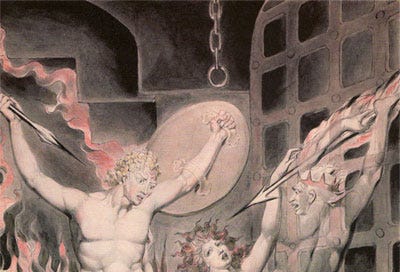






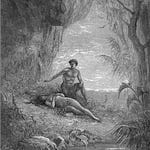
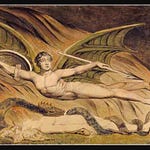

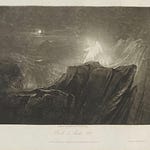
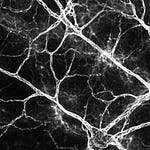
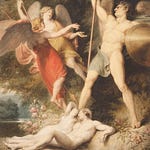
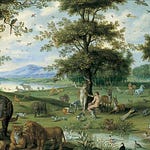
Share this post